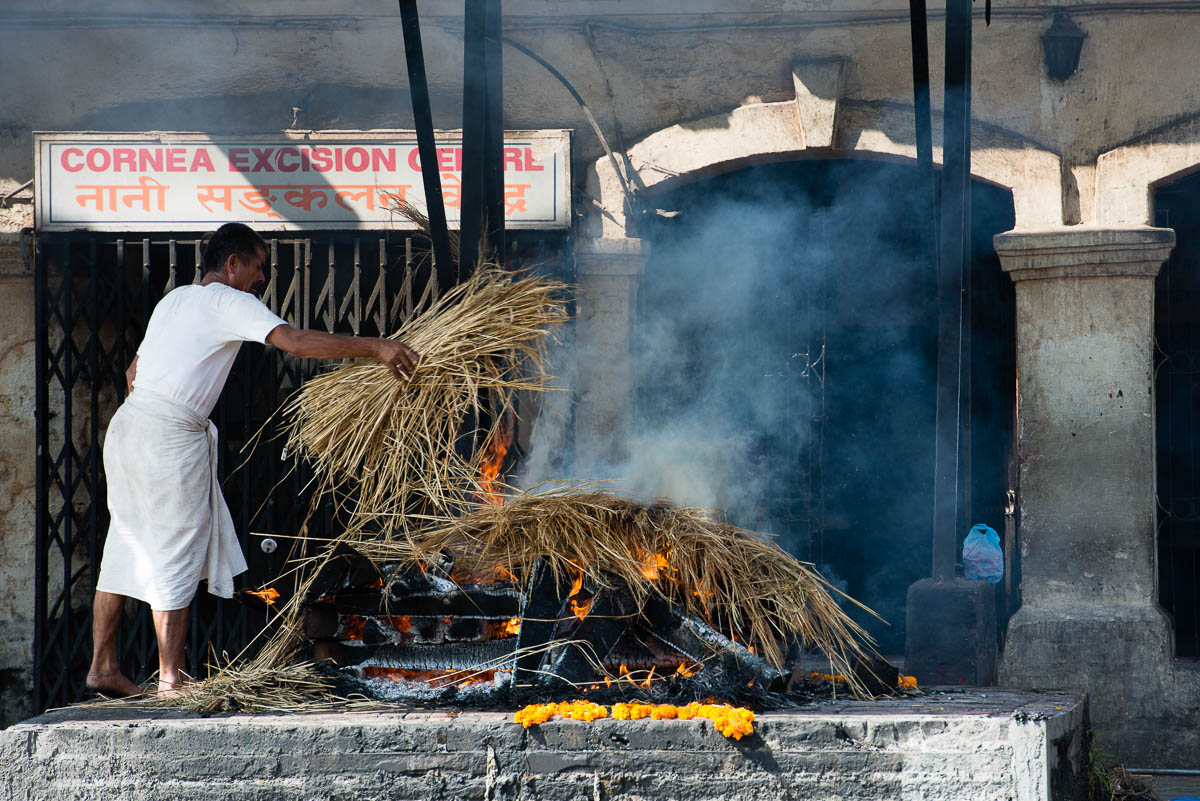
Of Cremations and Corneas
One of the most profound spectacles I witnessed on my recent photo tour of Nepal, was a series of cremations at the Hindu temple of Pushapatinath in Kathmandu.
I say profound not only because of the significance of the event for loved ones, but for how humbling the very public ceremony is. I was self-conscious photographing the ceremony from across the creek, but I was told by our Hindu guide that it was absolutely okay to do so. Still, at many points I paused, overwhelmed by the emotions it brought on. In this image you see the attendant heaping on more straw to keep the fire burning hot. Once the body is consumed, the ashes will be swept up and given to the relatives, many of whom will scatter the ashes in the creek below the pyre platform. Sometimes three or four pyres will be going at once.
But that is not the main thrust of this blog. What I’d like you to focus on is the sign over the pyre attendant’s head, advertising the Cornea Excision Centre (CEC). I thought that odd, until I found out the back story.
One out of every ten Nepalese is visually impaired, with corneal damage being the second biggest cause. A corneal implant is the only cure. Since 1996 the CEC has been trying to convince grieving relatives to allow them to excise the corneas so that they may be donated to the long waiting list of hopeful recipients. It is a difficult sell, since Hindu tradition has taboos against organ donation.
Still, the CEC is making gains, from an initial two donations in 1996 to 300 today. As word spreads of the miracles of restored sight, the hope is that more and more people will see the benefits of cornea donations.